Format(s):
SIG Perspectives
Adults who stutter (AWS) are a heterogeneous group in terms of lived experiences and
expectations for treatment. In this SIG 4 activity, learners will read three peer-reviewed
articles that focus on individual experiences of AWS that may lead to individual
preferences in treatment approaches. The first article examines correlations between
stuttering severity and measures of life satisfaction, self-acceptance, self-compassion,
and avoidance among AWS, comparing those who sought support from family, friends,
or the National Stuttering Association to those who did not. The second article focuses
on treatment preferences and reports on a multinational survey study investigating what
AWS consider important aspects of stuttering treatment. The results indicate that, while
most AWS value help with speech strategies and anxiety, there is significant individual
variation in treatment preferences based on factors like gender and geographical region.
Finally, the last article centers on the perceived positive experiences and benefits of
stuttering reported by 77 AWS. The analysis reveals four major themes: development of
skills, qualities, and talents; personal development; coping strategies; and support from
others, highlighting various ways that individuals have found positive meaning in their
stuttering experiences.
Format(s):
SIG Perspectives
Case study is a valuable instructional tool for advancing knowledge and skills in clinical practice. In this SIG 4 Perspectives activity, learners will read three peer-reviewed case study presentations emphasizing unique aspects of stuttering treatment in preschool children and adults.
Format(s):
SIG Perspectives
In this SIG 4 activity, learners will read three peer-reviewed articles centered on cluttering in preadolescent through adult speakers. The first article is a case study of a preadolescent with cluttering. In this paper, the authors highlight brain development
during adolescence, adolescent cognitive and emotional development, and the effects of a therapy approach based on objective speech measures. The second article is a research study concerned with disfluency clusters produced by adults with cluttering in natural conversations. The authors describe how disfluency clusters are affected by the
nature of the relationship between speakers. The last article presents qualitative data
from a focus group of adults with cluttering who have emerged as community leaders. Their reflections include recommendations for listeners and support groups, self management, and their thoughts on labels and acronyms.
Format(s):
SIG Perspectives
In this SIG 4 activity, authors describe ways to (a) increase speech-language pathologists’ comfort with treating stuttering by providing a structured grouping of activities centered around using education, ease, and empowerment (Gore & Margulis); (b) continue using empirical evidence and clinical experience to make informed decisions about assessment procedures for young children who stutter (Singer & Kelly); and (c) provide holistic speech-language therapy services for stuttering using telehealth (McGill & Schroth). Each of these articles provides practicing clinicians ways to gain confidence in their abilities to provide evaluations and treatment across delivery
paradigms.
Format(s):
SIG Perspectives
In this SIG 4 activity, authors detail the myriad of ways that stuttering can influence aspects of life, from parents’ differing perceptions of their child who stutters (Mostafa, St. Louis, El-Adaway, Emam, & Elbarody), to completion of turns by people who do not stutter when the person who stutters experiences stuttering (Kondrashov & Tetnowski). These articles help readers understand the pervasive nature that stuttering exerts on the lives of people who stutter across the lifespan.
Format(s):
SIG Perspectives
In this SIG 4 activity, authors explore ways to provide experiential learning to graduate students enrolled in stuttering courses (Palasik, Hughes, & Ellis) and discuss the clinical experiences of school-based speech-language pathologists related to stuttering (Panico, Daniels, Yarzebinski, & Hughes), strategies for teachers to support children who stutter (Cozart & Wilson), and ways to interrupt the narrative of ableism that surrounds the treatment of stuttering (Gerlach-Houck & Constantino). Each of these articles provides a unique perspective on ways that professionals can seek to create a more supportive environment for our clients who stutter by changing the foundations of the way we teach preservice clinicians, support our school-based colleagues, and address the narrative of ableism that pervades our culture.
Format(s):
SIG Perspectives
These articles show the breadth of topics relevant to the understanding and treatment of fluency and fluency disorders. The articles include topics on the impact of allergies on the sleep of children who stutter and using solution-focused principles to elicit perspectives on therapeutic change in older children who stutter and their parents.
|

